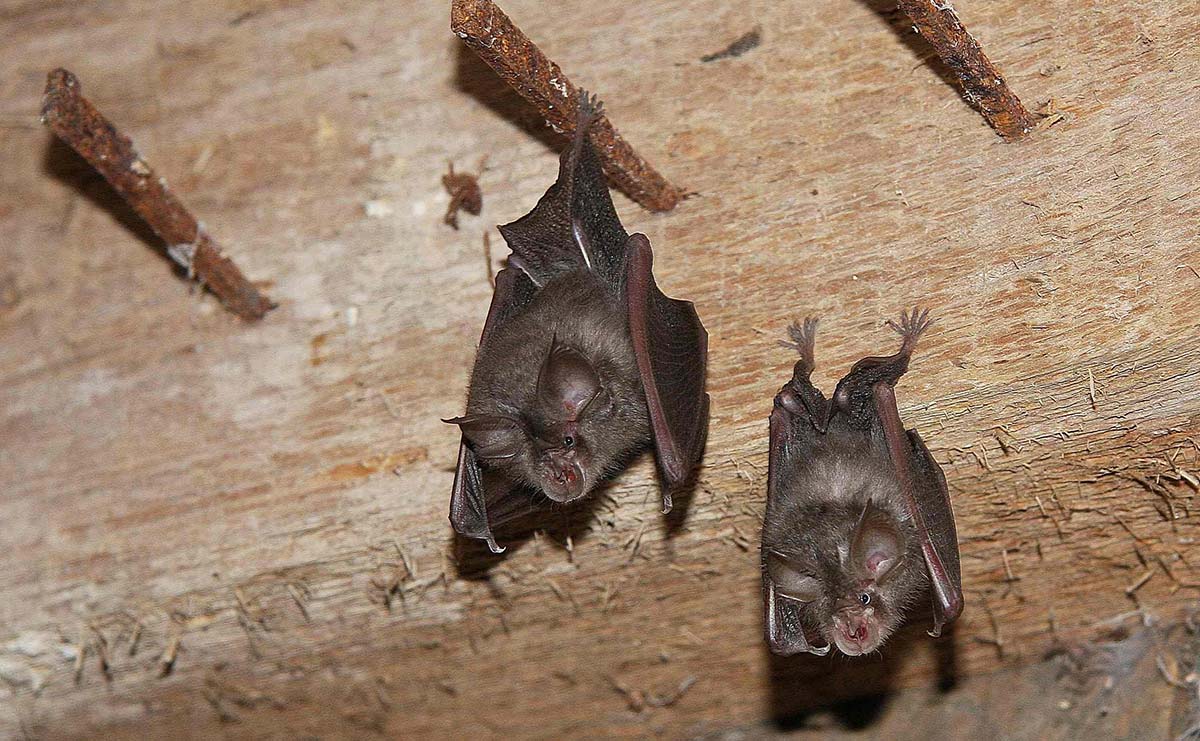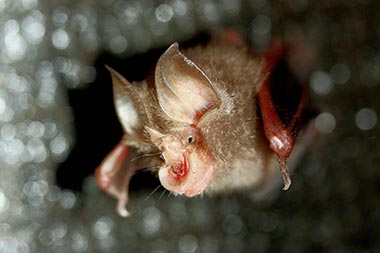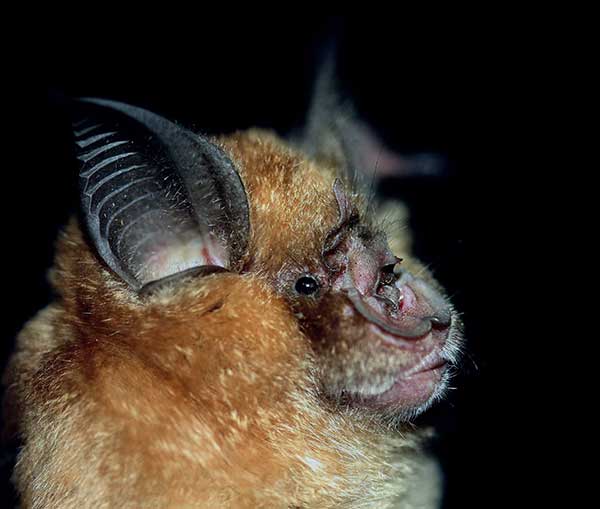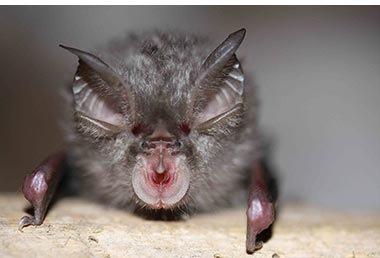
Part of the Forest of Dean’s beauty is that it sustains a wide range of wildlife – did you know that a quarter of the UK’s Lesser Horseshoe bat population, the largest concentration in Europe, is found in the Forest of Dean and Wye Valley area?

The network of underground mines and caves which extends beneath Puzzlewood is designated a Site of Special Scientific Interest (SSSI) because it supports a nationally important hibernation roost for lesser horseshoe bats and, to a lesser degree, greater horseshoe bats. The lesser horseshoe bat hibernation roost is the largest in the UK.
The Lesser Horseshoe bat
Smaller than its cousin, the lesser horseshoe bat has a wingspan of 20-25cm. The species has suffered a dramatic decline in numbers and the current UK population stands at approximately 50,000 concentrated in the south west, Wales and western Ireland. Sites in the Forest of Dean and Wye Valley support 26% of the lesser horseshoe bat population. The ‘horseshoe’ refers to the shape of its nose-leaf through which it emits its ultrasonic ‘calls’ (echolocation) that enable it to ‘see’ in the dark, navigate and catch its purely insect prey.
The Greater Horseshoe bat

Found predominantly in South Wales and the south west of England, the greater horseshoe bat has a wingspan of 35-40cm and can live for up to 30 years. It’s thought that there are only approximately 10,000 left and the population has declined by over 90% over the last century, largely due to the removal of hedgerows and changes in farming methods.
Bats around Puzzlewood and what we’re doing to help them
Although horseshoe bats (and some other bat species) have adapted to roosting in buildings such as roof spaces (and you could be blissfully unaware of bats in your home), cool caves are an ideal roosting and hibernating environment, so it’s little wonder that nearby Clearwell Caves is home to about 1,000 lesser horseshoe bats in winter. There is an entrance to the caves within our grounds, so we get plenty of bats hunting and flitting around Puzzlewood after sunset and they are an amazing sight.
Knowing the importance of the area for the conservation and preservation of these bat species, we take our responsibility seriously to do whatever we can to maintain a habitat that will sustain bats. Changes in the natural environment have a serious impact on all wildlife, and bats are no different. The lesser horseshoe bat, in particular, is vulnerable to starvation due to its low body mass and small fat reserves. Much of the problem derives from the fact that although a number of main horseshoe bat maternity and hibernation roost sites are protected under SSSI designations, the flyways and feeding areas they rely on are not directly protected, hence the struggle to exist as new homes and road networks claim chunks of land.

Horseshoe bats navigate by flying along linear features in the landscape, such as hedgerows, lines of trees, woodland edges and vegetated stream banks, and do not generally like flying across open fields. Lesser horseshoe bats feed mostly in broadleaved woodland as well as along the flyways, and greater gorseshoe bats tend to feed more in pasture, parkland and orchards, often next to water. Puzzlewood therefore provides excellent habitats, including woodland and the adjoining species rich grasslands, supporting a rich source of insects on which the bats feed on. Some of our other bat species are particularly fond of mature oak, beech and ash trees as roosts, so we’re happy to play host to all our bat guests.
We’re also working with Natural England as part of the Heritage Lottery funded Foresters’ Forest Batscape Project, which aims to more fully understand local horseshoe bat sites and take positive action to conserve them. The hedges and orchard that have been planted at Puzzlewood will, in time, provide an even better bat-friendly environment. Hedges (and trees) help horseshoe bats navigate their way through the landscape, as well as sustaining insect life that then provides a good food source. And the orchard will create a fantastic hunting ground once it becomes established. Cattle grazing at Puzzlewood is also beneficial to bats, particularly the greater horseshoe bat, which likes to feed on dung beetles and flies, so grazing pasture provides rich pickings. Hopefully, our efforts will ensure that we can continue to enjoy the aerial antics of bats for generations to come.
Would you like to get more involved in bat conservation?
Next time you’re at Puzzlewood, have a chat with us about our bats. You can also get involved in the Batscape Project. Volunteers are always needed, particularly to carry out surveys and planting hedges and trees – or maybe you’d like to join one of the project’s family-friendly bat walks. For general information about bats, the Bat Conservation Trust is a great starting point. You could also look at information provided by the Gloucestershire Bat Group.







